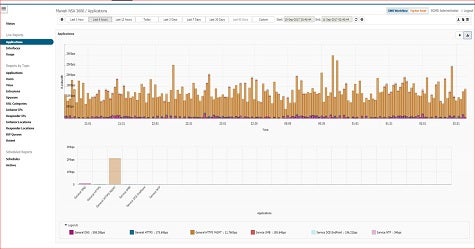Turns out that advances in wireless networking are being held up by firewalls that can’t keep up. To address that issue, SonicWall this week unveiled a 2.5 Gigabit NSA 2650 firewall alongside a SonicWave 802.11ac Wave 2 wireless access point.
In addition, SonicWall released an update to the SonicOS operating system that sports a new user interface and a Threat Intelligence API that can be employed to automate responses to new and emerging security threats.
Finally, SonicWall is adding a cloud analytics service to make it simpler to generate reports and an update to the Secure Mobile Access OS that is employed to grant remote workers secure access to email and files. The new release now makes use of a SonicWall Capture ATP cloud service to scan files for malware before they are uploaded.
Dmitriy Ayrapetov, director of product management for network security at SonicWall, says that as IT organizations move to deploy next-generation networks, the existing 1G corporate firewall becomes a bottleneck.
Ayrapetov notes that in the case of SonicWall, the firewall and wireless access points are joined at the hip from a management perspective.
“The access points are managed using the same management console as our firewalls,” says Ayrapetov. “We approach everything through the firewall.”
That strategy, says Ayrapetov, results in a more secure environment because IT administrators don’t have to swivel between two different consoles. That same management console can also be used to manage network switches from Dell EMC, adds Ayrapetov. SonicWall was spun out of Dell Technologies in the wake of the merger between Dell and EMC.
It’s not clear yet just how unified an approach most IT organizations will be interested in pursuing when it comes to managing wireless networks and security. Those two IT disciplines have been historically separate. But given the current state of security within most IT organizations, it may be past time to reconsider the relationship between networking and security.



